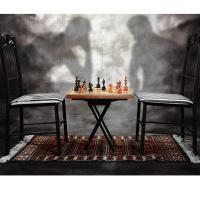
Openings for Tactical Players: Scotch Game
Despite its very respectable age, the Scotch Game is very popular these days. Super GMs like it as a convenient way to avoid the Marshall Counter-Attack in the Ruy Lopez and amateurs like it for its relatively simple strategic pattern. Unfortunately, such a popularity has its drawbacks. For instance, since everyone and their sister plays and analyzes the Scotch game, you need to be really well prepared in order to avoid a disaster in the opening. Of course you can study the books, follow the latest tournaments and comb the Internet for the latest theoretical developments, but frankly speaking, I could never understand why anyone at a sub 2600 level would do that. Say, you are playing your club-mate who is an 1800 rated chess-player. If you follow the theoretical line, then he can use his opening knowledge acquired from Kasparov's games or Anand's opening article. He reproduces their moves and effectively you are playing a super GM, not your 1800 rated buddy! What should we do to avoid this problem? I already explained a possible practical solution in my article "How to learn a new opening in one hour" (http://www.chess.com/article/view/how-to-learn-an-opening-in-one-hour)
So, let's try to use this approach in the heavily analyzed Scotch Game. After the initial moves 1.e4 e5 2. Nf3 Nc6 3. d4 exd4 4. Nxd4 Nf6 5. Nxc6 bxc6 we are literary one step from the Scotch Game tabiya. Either we play 6.e5 Qe7 or 6. Nc3 Bb4 and we enter the Scotch Jungle. Is there any way to avoid it? If we look at the position trying to determine what logical moves we have here besides 6.e5 and 6.Nc3, then we cannot miss 6.Bd3 which both protects the e4 pawn and prepares 0-0. Unlike 6. Nc3 it also avoids the Bb4 pin. Yet, the 6. Bd3 move is not very popular. Let's see why.
One of the first games where White played 6.Bd3 was a total disaster and I think it affected this move's reputation for more than a century:






